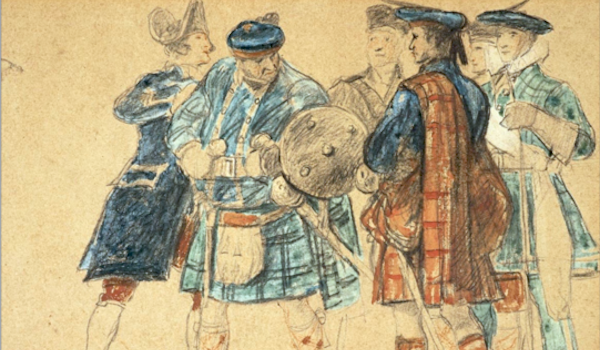
The Scots Blue Bonnet
Gathered round dinner tables all over the world, people will celebrate the life and work of Scottish poet Robert Burns tonight. To commemorate his birthday each year on the 25th of January, we eat haggis and read poetry in his honour. And to get into the Scottish spirit today, we dug into the Selvedge archive to unveil the story behind the Scots Blue Bonnet...

The Scots blue bonnet is famous in story and song, especially as worn by the romantic Highlander. Round knitted bonnets were once the universal head covering of men in Northern Europe. When, in the later Middle Ages, brimmed felt hats became generally adopted, the wearing of woollen bonnets was pushed out to the northern fringes. It lingered on until the present day, when it became the sign by which a Scotsman was everywhere identified.

Bonnets traditionally made in Dundee were not the neat little caps nowadays worn by the kilted fraternity. They were, in their heyday, serious affairs, built to keep out the extremes of weather. They were heavy and dense, weighing as much as 18 ounces and made of rough, coarse wool. Their circumference was much larger than the head so that they sat low on the crown and hung down over the ears, neck and forehead. The wide, wheel-like crown was gathered into a narrow headband which fitted closely round the brow. Sometimes an extra depth of band allowed a pattern of checks or stripes to be knitted in and sometimes there was a finishing touch of a ‘toorie’, a bobble made of wool ends; bright red, or more often – for the elderly and dignified – flatter and black to match the bonnet.
The blue bonnet was frowned upon by town society, perhaps because it was generally worn by the men who came down from the glens to trade or by the wild troops who followed one marauding leader after another in raids upon the town. The black bonnet was 'douce' and respectable but it did not aspire to elegance. It is not surprising that, as they gained some prosperity, those who cared to cut a dash adopted a hat. A hat could be worn with an air, while the bonnet was practical, serviceable and sensible...
You can read this article in full in Selvedge issue 60.
